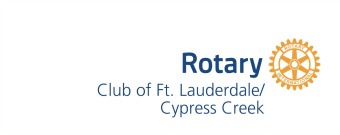Lisa and Sandy Hodes of the Children’s Fund for Glycoden Storage Disease (“GSD”) are the parents of 2 children with GSD. They will tell us about GSD, their personal experiences of having 2 children with GSD, the advances in treatment, and their creation of a foundation to help fund research for GSD.
GSD is a rare genetic metabolic disorder centered in the liver. In children afflicted with GSD, a specific enzyme that breaks down certain carbohydrates, including glycogen (a stored form of sugar,) is either missing or not functioning properly. Because of the missing /impaired enzyme, the body cannot create glucose from glycogen and it is difficult to maintain normal blood sugar levels between meals without constant feedings. Dangerous by-products such as lactate, uric acids and triglycerides in combination with low blood sugar leads to numerous complications in GSD including impaired breathing, seizures, coma and death if a very strict dietary regimen is not followed.
Children with this disease appear normal at birth, however, the child will begin to exhibit symptoms such as low blood sugar, an enlarged liver, failure to thrive, developmental delay, elevated lactate and uric acid levels in the blood and urine, and seizures. Because of GSD’s rarity, these symptoms are often not fully recognized and can lead to misdiagnosis. This will eventually lead to a crisis situation within the first three to four months of life. It is not known how many children die without ever having been properly diagnosed. Currently there is no cure for GSD.
The management of GSD is lifelong. GSD not only affects the child, but also deeply affects the parents and family of the child born with this disease. Diet is the cornerstone of treatment and many types of foods are restricted, severely limiting dietary options. GSD children should minimize foods containing sucrose (table sugar,) fructose (sugar found in fruits,) and lactose and galactose (sugars found in milk products) because these sugars end up as glycogen trapped in the liver. They also must be fed every one to four hours in order to maintain blood glucose at an appropriate level. Because this can often be very difficult for the child to tolerate and because missing a meal or a feeding time can have catastrophic effects, most have a gastric or naso-gastric tube placed. In infancy, the tube is critical for frequent feeds during the day and for using a continuous feeding pump at night. This alternative route of ingestion will also help during times of normal childhood illnesses when hypoglycemia and acidosis can occur more often. A consequence of having to eat so frequently is that GSD children often have problems ingesting food by mouth. They must undergo intensive therapy to relearn sucking, swallowing and even speech patterns.
Researchers have identified the chromosomal defects of this disease. With the combination of advances in gene therapy, more public awareness, and financial support GSD1 can be cured in the near future.

